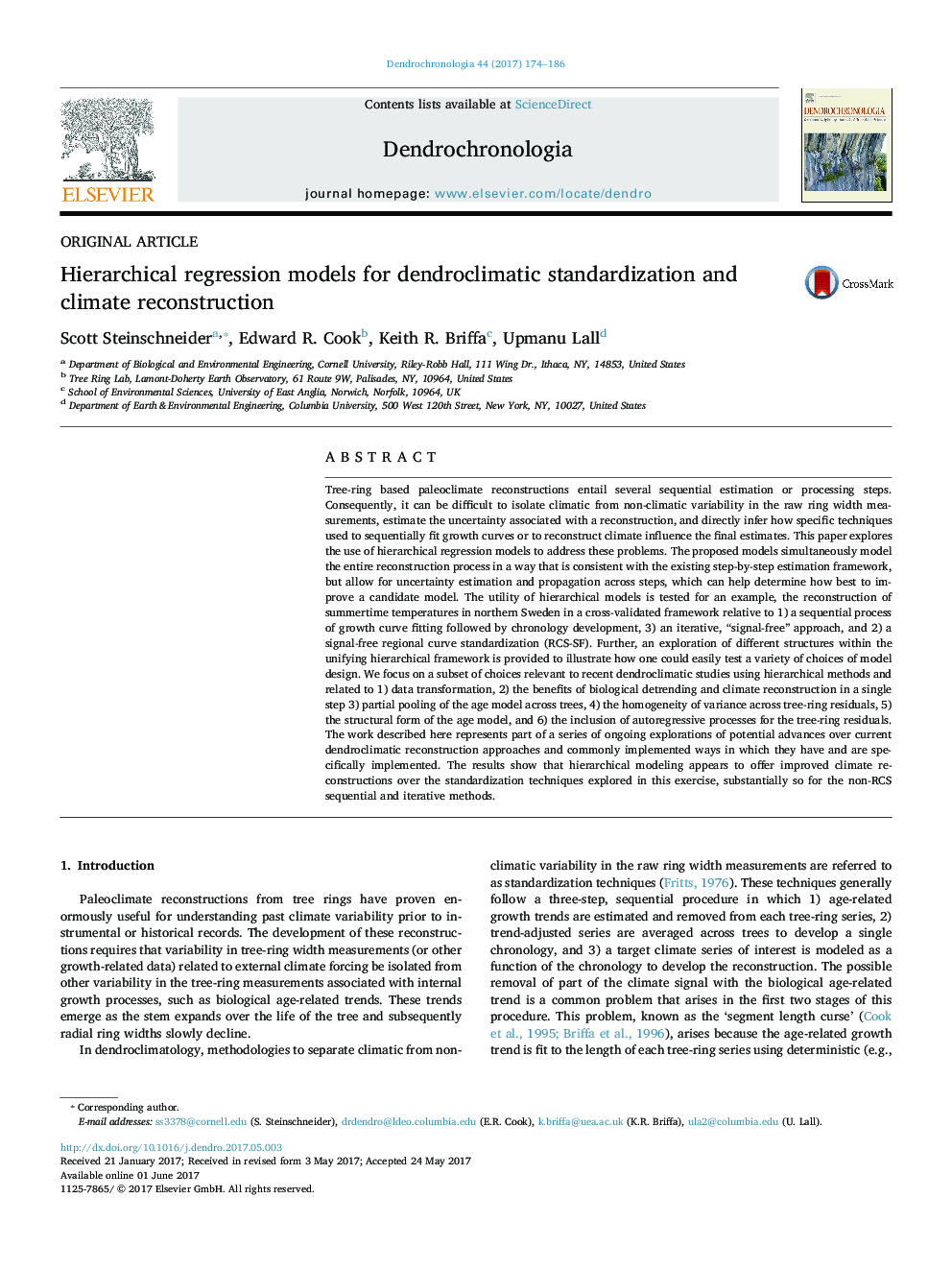| Article ID | Journal | Published Year | Pages | File Type |
|---|---|---|---|---|
| 6458956 | Dendrochronologia | 2017 | 13 Pages |
Tree-ring based paleoclimate reconstructions entail several sequential estimation or processing steps. Consequently, it can be difficult to isolate climatic from non-climatic variability in the raw ring width measurements, estimate the uncertainty associated with a reconstruction, and directly infer how specific techniques used to sequentially fit growth curves or to reconstruct climate influence the final estimates. This paper explores the use of hierarchical regression models to address these problems. The proposed models simultaneously model the entire reconstruction process in a way that is consistent with the existing step-by-step estimation framework, but allow for uncertainty estimation and propagation across steps, which can help determine how best to improve a candidate model. The utility of hierarchical models is tested for an example, the reconstruction of summertime temperatures in northern Sweden in a cross-validated framework relative to 1) a sequential process of growth curve fitting followed by chronology development, 3) an iterative, “signal-free” approach, and 2) a signal-free regional curve standardization (RCS-SF). Further, an exploration of different structures within the unifying hierarchical framework is provided to illustrate how one could easily test a variety of choices of model design. We focus on a subset of choices relevant to recent dendroclimatic studies using hierarchical methods and related to 1) data transformation, 2) the benefits of biological detrending and climate reconstruction in a single step 3) partial pooling of the age model across trees, 4) the homogeneity of variance across tree-ring residuals, 5) the structural form of the age model, and 6) the inclusion of autoregressive processes for the tree-ring residuals. The work described here represents part of a series of ongoing explorations of potential advances over current dendroclimatic reconstruction approaches and commonly implemented ways in which they have and are specifically implemented. The results show that hierarchical modeling appears to offer improved climate reconstructions over the standardization techniques explored in this exercise, substantially so for the non-RCS sequential and iterative methods.
